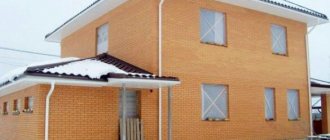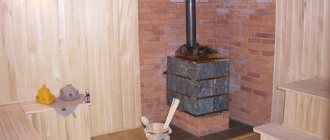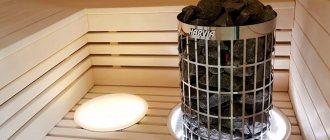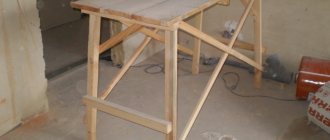Pool care consists of a large number of procedures to ensure the safety of the bowl, the functionality of additional equipment and the purity of the water.
Various techniques are used, but the simplest methods of protection are often the most effective. One of them is a pool cover to keep debris out of the water and also to retain heat.
The technique is very simple, it never fails or fails. We will tell you more about whether and how to cover a pool located on the street or in a dacha below.
Should an outdoor pool be closed?
Pools located on the street can be closed and thereby solve several issues at once:
- protecting water from dust, small debris or insects;
- cut-off from sedimentary moisture during rain;
- stopping the evaporation of water when the bowl is not in use to slow down its cooling.
The need for protection itself is not in doubt; only ways to implement it are discussed. The bowl is covered for different purposes depending on the time of day.
If during the day heating of water from the sun’s rays is added to the main list of tasks (with the help of special floating solar blankets), then at night the task is the opposite - it is necessary to limit evaporation so as not to lose thermal energy.
Storage rules
Proper storage of the pool in winter directly determines the condition in which it will meet the new season.
How to wash and clean before wintering?
The classic way to clean a seasonal pool from dirt and plaque:
- Cleaning begins by opening the drain hole. If detergents were added to the water before, it must be drained strictly into the sewer system, preventing it from getting into the soil.
- The remaining water is scooped out with a regular ladle.
- Using a brush with synthetic bristles, carefully clean the plastic sheet of the pool from silt. It is not recommended to use a wire brush - it can easily damage the material.
Experienced seasonal pool users have come up with many interesting cleaning methods.
Here are some of these recommendations:
- Having drained the water to a level just below the knees, you need to clean the walls with a brush, wetting it in water. The pump continues to operate and pump out water. Then, using a standard vacuum cleaner attached to the pump, vacuum the bottom of the pool. Finally, wipe the bottom with a cloth and leave to dry for a day.
- You can also drain the water by gravity by attaching a hose to the drain hole. Of course, this process will take several hours.
- When installing a pool under the bowl, it is recommended to make a recess: then, after draining, the remaining water will collect there, and it will be easy to scoop it out without driving water all over the bottom of the pool.
How to unmount?
The method of folding the plastic bowl depends on the shape of the tank:
- If the pallet is rectangular, it should be folded like a sheet, avoiding folds and creases.
- Folding a round bowl begins by laying the walls inward, after which the bottom is folded in half twice. The result is a triangle, which is further reduced to a convenient size.
- If there is a cable inside, then it is removed from the loops.
Before folding the fabric, check drying of all folds and hard-to-reach places so that not a single drop of water remains. Only a perfectly dried pool is guaranteed to last until the next season. Small bowls can be dried by hanging them on lines.
The frame is quite easy to disassemble:
The pins are unscrewed, the side and bottom hinges are disconnected, and the beams are removed. The vertical supports are dismantled, the nozzles, hinges and hinges of the awning are removed. During the dismantling process, it is important not to forget to rinse the drain hoses: it is good to do this with a mixture of citric acid and Feri-type dishwashing detergent. All components are marked and placed in packaging.
How and where to save structural parts?
The frame parts (unlike the bowl) can withstand storage at low temperatures. Therefore, once packaged and labeled, they can easily be left in a garage or country house for the winter. As for the bowl, it needs to be stored only in a heated room.
The pool liner is perfectly stored in the vegetable store. Holes that form in places where there are creases can be repaired with self-adhesive cheap patches: such repairs can withstand one season just fine.
What types of shelters are there?
There are several types of pool covers:
- awning;
- cover;
- solar coating;
- trampoline covering;
- roller protection;
- canopy;
- dome;
- pavilion;
- permanent building.
Protection options are listed in order of increasing complexity of construction and installation. Some of them are structures that require full-fledged and expensive construction. Others are simply canvases of various types of film, laid directly on the water or suspended on the sides.
Useful tips
The experience of owners and specialists in the installation and maintenance of outdoor swimming pools allows us to determine the basic rules that are relevant for stationary and frame structures:
- It is recommended to cover the mothballed pool with awnings made of durable materials (tarpaulin, PVC film, etc.).
- The use of homemade metal shields and wooden frames is irrational, especially on small bodies of water.
- Preservation must be carried out before the first frost.
Preventative work before the cold season helps prevent the destruction of the main structure and is aimed at protecting materials from the formation of mold and mildew.
What is the best way to cover the top of the bowl?
All methods of protection are used for a specific purpose . As a rule, the pool is covered precisely to solve this particular problem, which is too obvious and bothers users.
From garbage
Small debris, leaves, insects and dust are the companions of any outdoor pool. They float on the surface and settle to the bottom, forcing you to constantly vacuum the bowl and clean the surface of the water with a net. Shelter allows you to get rid of this problem, at least for the time it is installed.
Options for the most popular protection methods:
Tent. This is a canvas or hard covering installed above the water itself and secured to the sides of the bowl.
Forms a continuous barrier to all external pollutants. The main disadvantage of the awning is that installation is done manually and requires at least one assistant.- Canopy. This is an extensive group of accessories and structures that protect the pool from the wind and all the components it can bring (dust, debris, other objects).
There are open and closed canopies, stationary and folding. The main problem is the need to install and maintain the structure, which is not able to completely stop external threats - a certain amount of garbage still ends up in the water, and the canopies do not stop insects at all. - Dome. This structure is practically no different from a canopy, but creates greater coverage of the bowl. The degree of cut-off of external components is deeper, especially from rainwater.
- Pavilion. This structure most completely covers the bowl and is capable of covering it entirely. The pavilion has no less disadvantages than advantages - along with maximum protection, the pavilion can create an uncomfortable microclimate inside (like panic), the transparent canvas collects condensation, construction or installation requires significant effort and expense. In addition, the cost of the pavilion is very high, which significantly limits their use.
Despite all the pros and cons, any pool cover can protect from dust and debris.
To warm up the water
Warming up the water can only be provided by one type of shelter - a solar blanket . This is a canvas made of two (or more) layers of film with small cavities that receive thermal energy from the sun and release it to water. The bubbles form a greenhouse effect, accumulating heat, which is immediately transferred to the water.
Such a blanket is not able to completely solve the heating problem, especially for large-volume bowls, but it can reduce the load on the main heater and reduce heat loss.
The main disadvantage of a solar blanket is its inconsistent operation - it is useless at night, and in cloudy weather it can only perform its functions when deployed.
Manufacturers claim that the heating sheet can raise the temperature of the water in the pool by 18° (with a film thickness of 16 mm). However, these statements must be understood correctly - the effectiveness of the film depends on many external factors (weather, air temperature, volume of water, etc.).
This article will tell you what a pool cover film is and how to use it.
For the night
At night, pools are covered to protect them from foreign components (dust and debris, rainwater), as well as to prevent water evaporation.
This is a process that is accompanied by strong cooling, which is undesirable and even unacceptable.
The most effective are dense methods of protection - awnings, blankets and other types of fabrics that are in direct contact with water .
Structures that form a protective cocoon around the bowl (canopies, domes or pavilions) are ineffective against evaporation, since they are not able to stop the physical process.
Pneumatic (inflatable) domes
Pneumatic domes are the most affordable of all roof-shaped structures . Inflatable structures have a simple design and are easy to install. The fans regulate the air flow into the vinyl bag, and once the canopy reaches its maximum value, the air pressure continues to maintain it in an inflated state. Doors with zippers are equipped with transparent screened windows. Removing such a coating is not at all difficult; to do this, just turn the switch on the fan.
As a result, the structure instantly deflates, and for ease of storage it can be rolled up at your discretion. Despite the fact that inflatable structures serve their owners well, one should not forget about their service life, because such shelters are very susceptible to frequency of use and the wearing influence of weather. The fabric of the inflatable dome has a special coating against UV radiation, but it is inferior in service life to permanent structures.
Where and approximately at what cost can I buy it?
Pool covers can be purchased at specialized stores that sell accessories. The most convenient option is to use online stores, where they offer the widest range and you can choose any type of covering without leaving your home. Prices for protective sheets depend on their type, size and other features.
For example, awnings cost 500-800 rubles. (per m2), solar blankets are in approximately the same price range. The cost of canopies or pavilions is much higher and starts from 5,000 rubles. (for small mobile folding models).
What can you make with your own hands?
Any type of protective accessories can be made:
- awning;
- canopy;
- dome;
- pavilion.
Making shelters is only advisable if the cost of factory products is too high. For example, buying or making an awning yourself does not differ in terms of costs, but in terms of time spent, purchasing noticeably wins.
The situation changes if the pavilion is made with your own hands - at prices of about 300-400 thousand rubles, it is much more profitable to make the structure with your own hands .
The easiest option is to make an awning. Typically, such work is performed when canvases of the required shape or size are not available for sale.
Tools and materials
You need to prepare:
- vinyl or polypropylene film;
- welding device or powerful construction hair dryer;
- tools for measuring and cutting film (ruler or tape measure, scissors, shoe knife);
- nylon cables for fastening the awning.
Manufacturing process
Procedure:
Measuring the film, cutting the canvas to the shape of a bowl. First you have to weld a whole piece of fabric, from which you then cut out an awning with an allowance at the edges of about 20-30 cm.- The edges of the film are folded and welded. For tension models, metal inserts are sometimes used to make the edges rigid and retain their shape.
- Solder loops to secure the cables. Fasten the tension elements, check the conformity of shape and size.
During the manufacturing process, various additional operations are possible if the awning has specific parts or accessories (holes, valves, pockets). You can learn how to make a pool cover with your own hands here.
Roller covering
Plastic plates are buoyant and at the same time strong enough to support the weight of a child. The plates are wound onto a drum, which operates automatically and is controlled using a remote control.
Pros:
- Practicality, stylish design;
- Automatic control;
- Reliable protection against children falling into the pool;
- The heat of the water is retained;
- Water does not evaporate;
- Can be used for a pool of any size.
Minuses:
- High price;
- After cleaning the roller blind, debris remains on the water.
Product installation procedure
The procedure for installing protective covers should be familiar to every pool owner.
Awning
Installing an awning is the most labor-intensive procedure. Most of the paintings have to be placed manually, which requires the participation of one or two assistants.
Procedure:
- the canvas is laid from the end of the bowl (or from one edge if it is round);
- two people take hold of the edge of the canvas from different sides of the bowl and simultaneously pull it, trying not to make folds or distortions;
- when the entire area is covered, the cover is leveled again and secured with cables.
Sometimes the participation of a third person is required to straighten the canvas and prevent it from overturning the sides of the frame pool.
Dome
The dome is installed in accordance with the instructions. As a rule, folding models are installed in the following order:
- The folded frame is placed in the right place.
- The frame elements are straightened and moved into working position. It is fixed using special elements.
- If the canvas is installed separately, it is laid and secured.
Installing a folding canopy is no more difficult than installing a camping tent. The main thing is to act carefully and not damage the transparent film.
Pavilion
The pavilion is a permanent structure . In order to cover the pool, you need to move the movable sections so that they hide the entire area of the bowl.
This is a simple procedure, and on large structures it is also automated - when you press a button, the sections are moved using servos and stop at specified positions.
Cases with fastening device (rail system)
Covers for stationary pools are divided into 2 categories : with a rail system and fastening devices. Covers equipped with a fastening device protect the pool with a special cover made of reinforcing mesh or vinyl reinforced with stitched braid.
They are installed using adjustable clamps and springs, which are attached to anchors mounted on the formwork. Such covers are quite heavy and only professionals can install them. With the development of modern technology, it has become possible to order a cover with your own special design to cover an elevated spa, steps, water and stone inserts inside the pool.
As for cases with a rail system , they are considered the most expensive. These shelters consist of an entire roll of vinyl that is stored on a drum, reel or reel system. The vinyl is attached to tracks (rails) that run the entire length of the pool.
Such covers are available manual and automatic. The manual shelter model assumes that someone
turned the handle to open and close the case. It requires manual force and is therefore only suitable for small pools. In the automatic version, everything is much simpler; an electric motor is used here. Therefore, it is not at all surprising that this version costs several times more.











